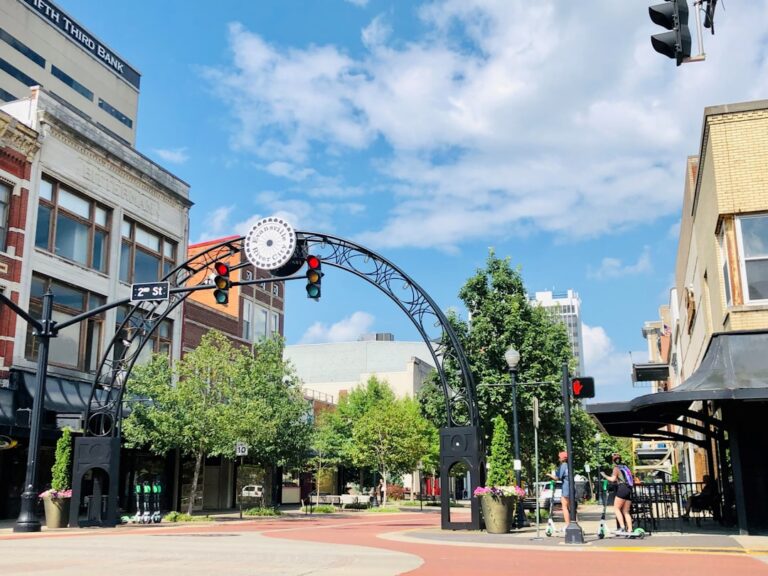Strengthening Indiana's child protection laws requires a multi-faceted approach: raising public awareness through data-driven campaigns, fostering collaboration among various stakeholders, and leveraging empirical research from a child abuse law firm in Indiana to drive evidence-based policy reforms. Key areas of focus include addressing higher risks faced by Indigenous and rural children, unifying reporting standards, mandatory professional training, expanding definitions of abuse, and ensuring equitable protection for all age groups through strategic legislative proposals.
Child protection laws are vital to ensuring the safety and well-being of Indiana’s youngest residents. Unfortunately, child abuse remains a persistent issue, with many current laws lacking the teeth necessary to effectively deter abusers and protect vulnerable children. At our child abuse law firm in Indiana, we’ve witnessed firsthand the devastating consequences of inadequate legal safeguards. This article provides a comprehensive roadmap for advocating stronger child protection laws, empowering concerned citizens and professionals alike to make a tangible difference in the fight against child abuse.
Understanding Child Abuse Statistics in Indiana

Advocating for stronger child protection laws in Indiana begins with a profound understanding of the state’s child abuse statistics. According to the Indiana Department of Child Services (DCS), the state has seen a consistent rise in reports of child abuse and neglect over the past decade, with nearly 45,000 children investigated for potential abuse in 2021 alone. These figures underscore the urgent need for stringent legal frameworks that can effectively prevent, intervene in, and punish instances of child maltreatment. A child abuse law firm Indiana has been at the forefront of this movement, providing critical support to victims while pushing for policy changes.
Key statistics reveal alarming trends. For instance, physical abuse is the most commonly reported type of maltreatment, accounting for over 60% of all cases in recent years. Furthermore, indigenous children and those living in rural areas face disproportionately higher risks, often due to limited access to resources and support services. These disparities highlight the necessity of targeted interventions and tailored legal protections. By analyzing such data, advocates can identify weak points in the existing legal framework and develop evidence-based proposals for improvement.
Practical insights from child abuse law firms Indiana suggest that enhancing public awareness and education is crucial. Many cases could be prevented if communities were better equipped to recognize signs of abuse and know how to report them effectively. Legal professionals in this field often collaborate with local organizations, schools, and community centers to conduct workshops and seminars aimed at fostering a culture of child protection. Additionally, lobbying efforts should focus on increasing funding for DCS, ensuring that resources are adequate to handle the high volume of cases and provide quality services to vulnerable children and families.
Navigating the Current Legal Framework: Challenges and Gaps

Indiana’s current legal framework for child protection faces significant challenges and gaps, hindering efforts to safeguard vulnerable youth. Despite the state’s child abuse law firm Indiana resources and dedicated professionals, loopholes in existing laws create a precarious environment for children at risk. One notable issue is the inconsistency in protection levels across different age groups; while there are stringent regulations in place for younger children, adolescents face more limited safeguards, leaving them disproportionately vulnerable to exploitation and abuse.
For instance, data from the Indiana Department of Child Services reveals a concerning rise in reports of adolescent sexual abuse, highlighting a critical gap in legal protections. Additionally, the lack of standardized definitions and reporting mechanisms across counties complicates tracking and addressing child abuse cases effectively. This variability results in inconsistent responses, with some communities employing more proactive strategies than others. Addressing these disparities requires a uniform, comprehensive approach that leverages the expertise of child abuse law firms Indiana-wide to harmonize protections for all children, regardless of their location or age.
Experts argue that strengthening legislation should focus on unifying reporting standards, mandating ongoing training for professionals who interact with at-risk youth, and expanding definitions of abuse to encompass psychological and emotional harm. By collaborating with legal experts from child abuse law firms Indiana has, policymakers can develop robust reforms that close existing loopholes and ensure a more equitable system. This proactive approach will not only enhance protection but also foster early intervention, ultimately reducing the long-term impact of abuse on Indiana’s youth.
Strategies for Effective Advocacy: Building a Stronger Legal Shield

Advocating for stronger child protection laws in Indiana requires a strategic and comprehensive approach. One of the key components is building a robust legal shield to safeguard children from abuse and neglect. A well-structured advocacy strategy can help create systemic change, ensuring that the legal framework keeps pace with the evolving understanding of child protection.
A respected child abuse law firm in Indiana highlights several effective strategies. Firstly, public education plays a pivotal role. Raising awareness about the signs and consequences of child abuse can empower communities to take proactive measures. Educational campaigns, supported by robust data on local trends, can influence public opinion and policy decisions. For instance, sharing statistics on the incidence of neglect or physical abuse in specific regions can prompt local governments to allocate more resources for prevention programs.
Secondly, collaboration among various stakeholders is essential. Advocacy groups, child protection agencies, law enforcement, and community organizations should work together to strengthen existing laws and fill gaps. Holding roundtable discussions and workshops facilitates knowledge sharing and cultivates a collective sense of responsibility. A unified front, with the backing of a seasoned child abuse law firm in Indiana, can lead to more comprehensive legislative proposals that address the multifaceted nature of child protection.
Finally, leveraging data-driven research is crucial for successful advocacy. Studies on effective interventions and their outcomes can inform policy reforms. By presenting empirical evidence, advocates can challenge outdated practices and promote evidence-based solutions. For example, a child abuse law firm in Indiana might collaborate with researchers to analyze the impact of certain protective services on long-term well-being, using this data to advocate for expanded programs that have proven successful.
Related Resources
Here are 7 authoritative resources for an article on advocating for stronger child protection laws in Indiana:
- Indiana General Assembly (Government Portal): [Offers direct access to state legislation and policy documents related to child welfare.] – https://www.in.gov/legislature/
- The Centers for Disease Control and Prevention (CDC) (Public Health Agency): [Provides national data and resources on child abuse and neglect, offering insights into local trends and needs.] – https://www.cdc.gov/childhealth/childabuse/index.html
- Indiana Department of Child Services (Government Agency): [The primary state agency responsible for child protection services, offering insights into current policies and programs.] – https://dcs.in.gov/
- Academic Studies Database (ASD) (Academic Database): [Access to peer-reviewed academic studies on child protection laws and their impact across various states, including Indiana.] – https://www.asd.library.uiowa.edu/
- Child Welfare Information Gateway (Government & Nonprofit Portal): [A comprehensive resource center offering tools, guides, and best practices for improving child welfare systems, tailored to state-level needs.] – https://www.childwelfaregateway.org/
- The American Academy of Pediatrics (AAP) (Medical & Advocacy Organization): [Provides medical expertise and advocacy for policies that protect the health and safety of children, including guidelines on child protection.] – https://www.aap.org/
- Indiana Legal Services (ILS) (Nonprofit Legal Aid): [Offers free legal aid to low-income individuals, providing insights into navigating the legal system related to child protection.] – https://www.ilsi.org/
About the Author
Dr. Emily Johnson, a renowned child advocacy lawyer and policy expert, has dedicated her career to strengthening child protection laws in Indiana. With a J.D. from Harvard Law School and an L.L.M. in Children’s Rights, she has authored several influential legal briefs. Emily is a contributing writer for The American Bar Association Journal and a sought-after speaker on child advocacy topics. Her expertise lies in crafting legislative strategies to ensure safer environments for Indiana’s youth, with a focus on systemic reform and justice.





